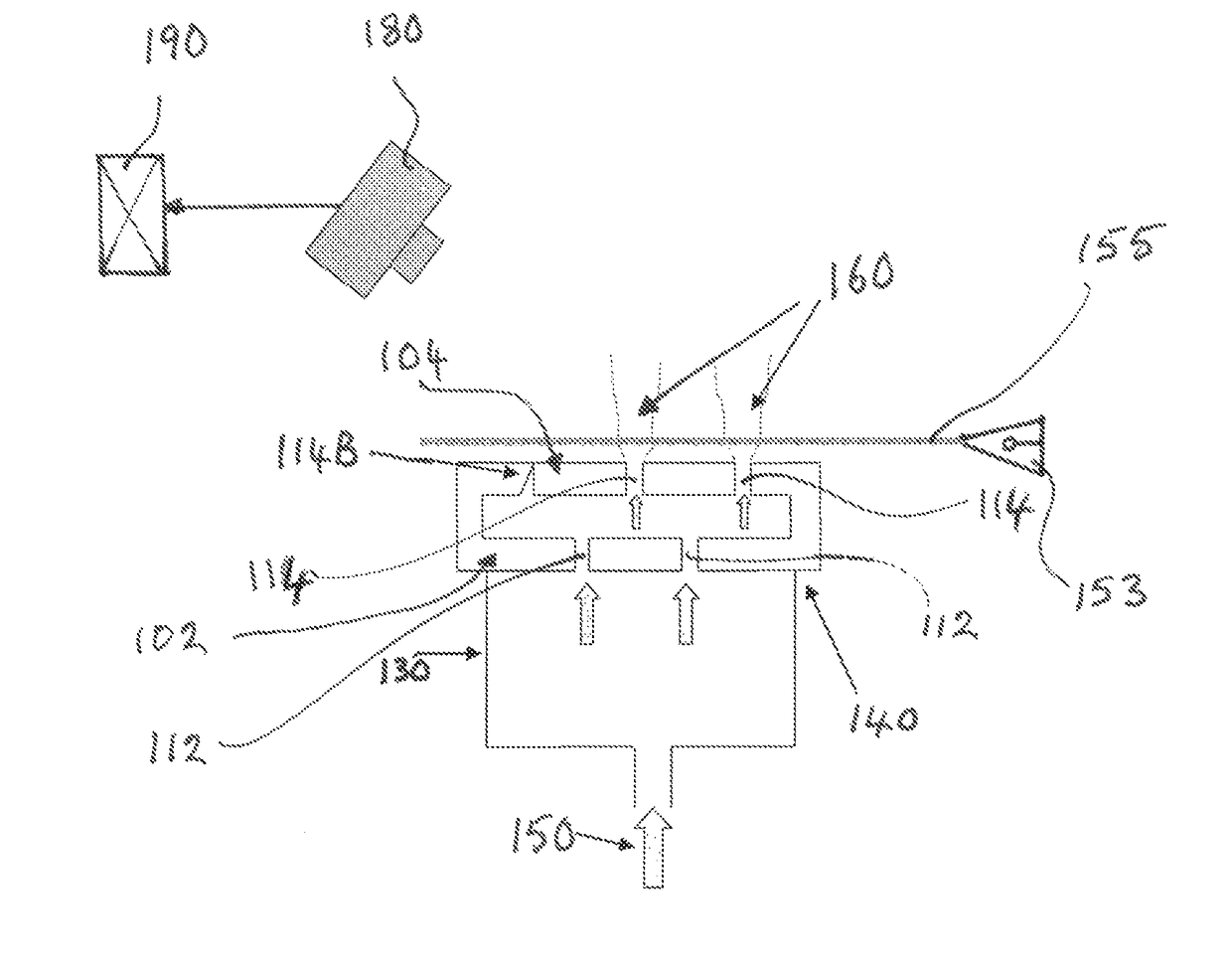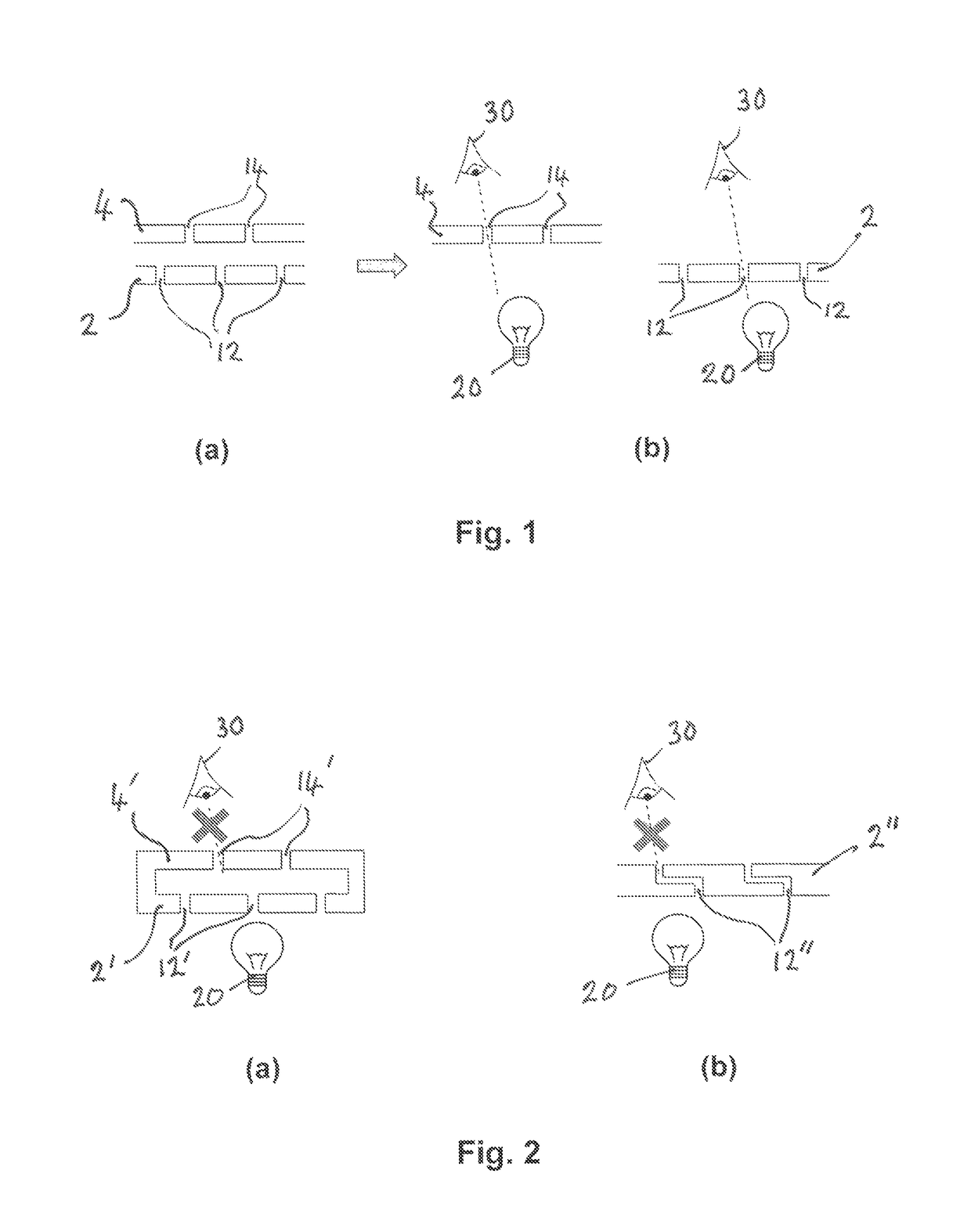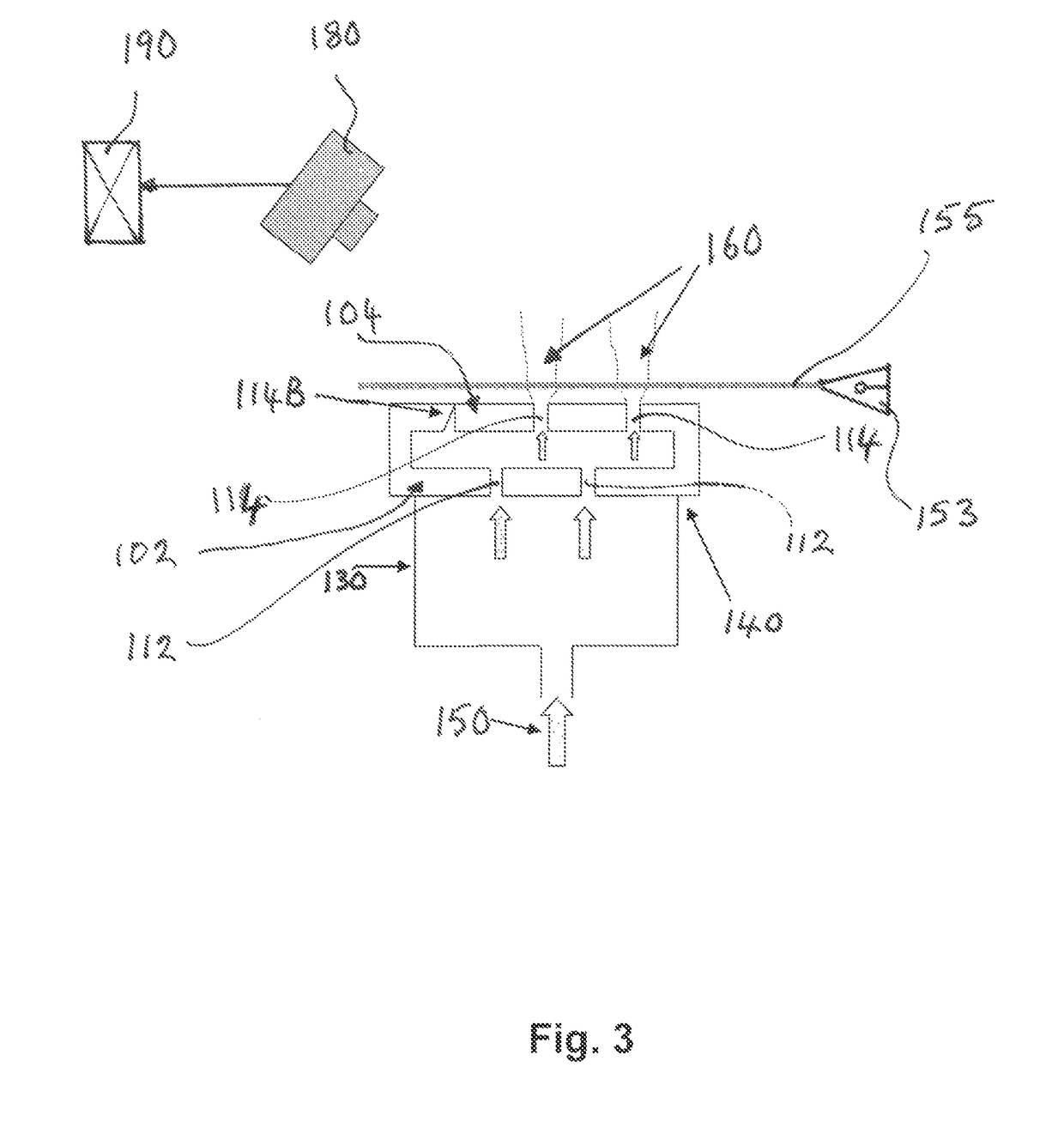Method and apparatus for testing of engine components
a technology for engine components and testing methods, applied in the direction of machines/engines, fluorescence/phosphorescence, instruments, etc., can solve the problems of significant mechanical and safety risks, use of alm methods, and difficulty in servicing, maintenance and/or repair procedures, so as to facilitate the flow or permit the flow, minimise or eliminate any risk, and enhance the effect of optical contras
- Summary
- Abstract
- Description
- Claims
- Application Information
AI Technical Summary
Benefits of technology
Problems solved by technology
Method used
Image
Examples
Embodiment Construction
[0059]Referring to FIG. 3 of the drawings (FIGS. 1 and 2 having already been referred to in the context of the prior art), here there is shown schematically a test arrangement in accordance with an embodiment of the invention. For the most part this illustration will be self-explanatory, in view of the foregoing description and discussion.
[0060]As shown in FIG. 3, the engine component comprises a pair of walls 102, 104, which are shown here by way of example as being twin wall sections of a unitarily formed integrated piece, such as that formed by an additive layer deposition (ALM) method. The wall 102 comprises a plurality of through-holes 112 therein, which may be of any number and in any pattern, and the wall 104 likewise comprises a plurality of through-holes 114 therein, again in any number and pattern. In this illustrated example, it is the wall 104 which is to be tested for the occurrence and / or location and / or identity of one or more of the through-holes 114 therein which ma...
PUM
 Login to View More
Login to View More Abstract
Description
Claims
Application Information
 Login to View More
Login to View More - R&D
- Intellectual Property
- Life Sciences
- Materials
- Tech Scout
- Unparalleled Data Quality
- Higher Quality Content
- 60% Fewer Hallucinations
Browse by: Latest US Patents, China's latest patents, Technical Efficacy Thesaurus, Application Domain, Technology Topic, Popular Technical Reports.
© 2025 PatSnap. All rights reserved.Legal|Privacy policy|Modern Slavery Act Transparency Statement|Sitemap|About US| Contact US: help@patsnap.com



